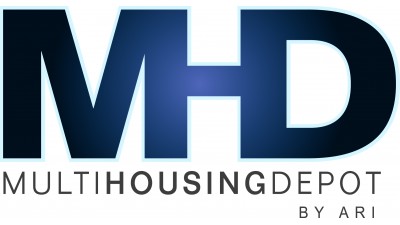What That Label On Energy-Efficient Windows And Doors Really Means

Windows and doors make up 41% of heat transfer in a home, no matter the time of year, and account for 45% of heating and cooling costs. Understanding how they lose, gain and maintain heat is essential to cutting expenses.
The average American household spends $1,500 to $2,500 annually on energy bills. This includes multifamily owners, who doled out a collective $18B in energy expenses in 2005.
Energy-efficient windows and doors offer the best solution to not only lower energy consumption, but also save money and create a more comfortable living environment. Certification from the National Fenestration Rating Council is the most reliable way to compare products. While Energy Star can determine if a product is energy efficient, the NFRC provides a way to assess efficiency across several performance categories.
From stopping heat transfer to preventing air leakage, mastering the NFRC label can help owners and managers find the right products for their multifamily properties.

U-Factor
Windows and doors lose heat during the winter and gain it during the summer through a process known as non-solar heat transfer. There are four ways the process occurs: conduction, the direct movement of heat through the window to the outdoors; radiation, the movement of infrared energy through the glass; and convection, the cyclical motion of air cooling and sinking toward the floor before warming and rising again.
The combination of these factors as a measure of heat loss gives a window or door its U-Value. The lower the value, the greater a product’s resistance to heat flow and the better insulated the product. Ratings generally range from 0.10 to 1.20.
U-factor is particularly important in northern climates.
Solar Heat Gain Coefficient
Owners should look for a low number between zero and one for the Solar Heat Gain Coefficient, which measures how well a product can block solar heat transfer through the glass, especially during the summer. The lower the number, the lower the potential for wasted cooling expenses. SHGC is particularly important in southern climates.
Visible Transmittance
Natural lighting is not only good for individual health, but also for a building’s energy budget. Windows that let in more light will reduce dependence on artificial lighting during the day. VT is expressed as a number between 0 and 1. The higher the VT, the more light comes through the product.
Air Leakage and Condensation Resistance
Air passing through a product can create drafts and promote both heat loss and gain. Air leakage is measured in cubic feet/minute/SF, and the NRFC places products within a range from 0.1 cubic feet/minute/SF to 0.3 cubic feet/minute/SF. The lower the number, the lower the potential for draft through the product. This measurement does not take installation into account while making the assessment.
The NFRC also has a rating for condensation resistance. The higher the number, the less likely the glass will fog up.

Energy-efficient windows utilize less-conductive materials that lower the U-Value.
Multichambered vinyl frames, nonmetallic glass spacers and foam-filled extrusions impede heat flow. Insulated glass units with a low-conductance gas like argon between the panes mitigates convection. To combat radiant transfer, low-emissivity glass coatings bounce solar heat away from the glass while keeping heat inside during colder months.
Double and triple weather-stripping and compression seals on the windowsill are also implemented to create a tight barrier and prevent air leakage.
Multi-Housing Depot offers NFRC-certified windows and patio doors that improve the living conditions of residents and lower heating and cooling costs. Owners can look to Multi-Housing Depot as a partner in transforming their properties into comfortable and energy-efficient spaces, one pane of insulated glass at a time.
To learn more about this Bisnow content partner, click here.

